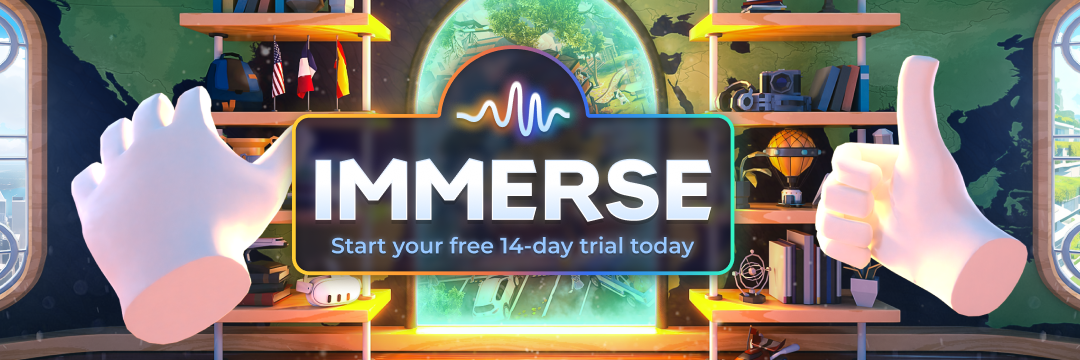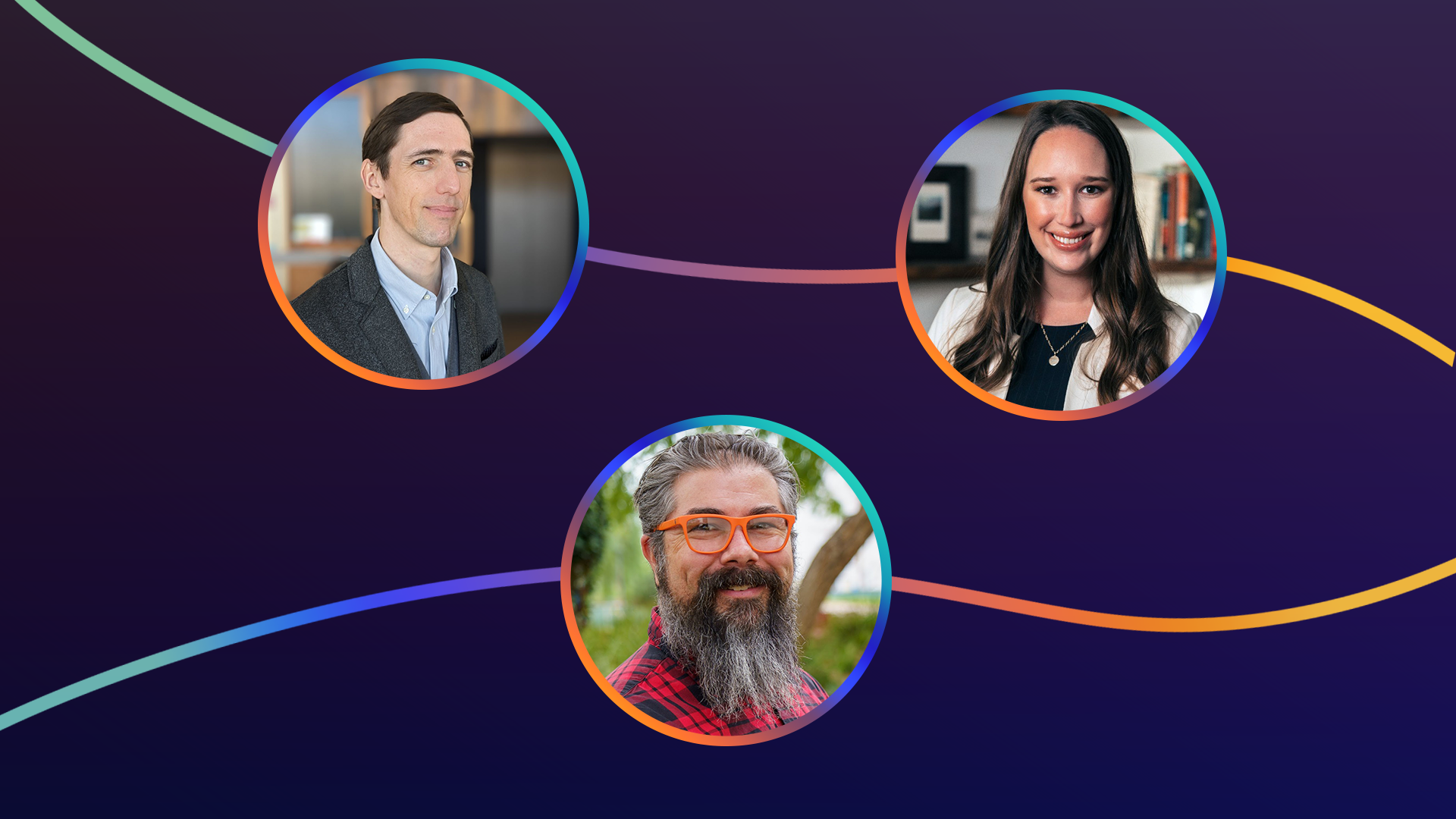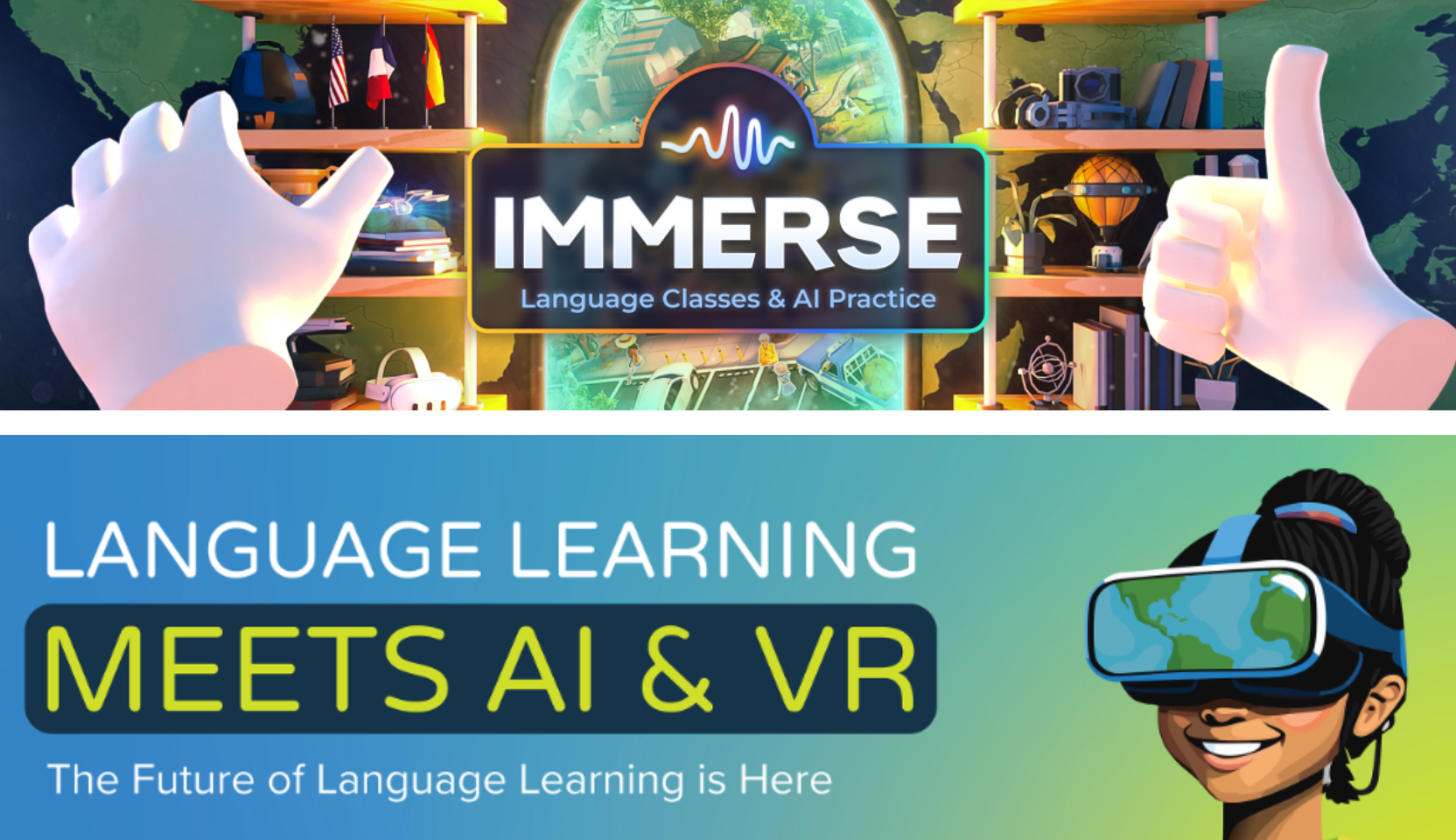Last Updated: December 3, 2023
Immerse insights:
- Learning to speak more than one language is a pretty natural thing to do.
- Cultural attitudes can make learning another language seem like a really big deal, but it’s something anyone can do.
- Once you know what to expect, you’ll find it a lot easier to learn Spanish, French, or any other language you’ve been dying to learn!
Did you know that most of the people in the world speak more than one language? In fact, it’s been estimated that up to three-quarters of the world’s population is multilingual. But if you grew up in an English-speaking household, chances are it’s the only language you speak. So what’s wrong with you?
(Spoiler alert: There’s nothing wrong with you.)
Here are four reasons why you (and millions of English speakers in the U.S.) struggle to learn Spanish or French
1. Your education system didn’t support you
Many Americans don’t get a chance to learn a language in school. Only a quarter of elementary schools and about half of middle schools in the United States teach foreign languages. Even at the high school level, one in ten U.S. schools doesn’t offer a foreign language.
So while other young people around the world spend years learning a language, students in the U.S. can consider themselves lucky if they get to take a language for a year or two. Those lost hours make a real difference. According to the U.S. State Department, an English speaker can, for example, become fluent in Spanish after about 600-750 hours of learning. If you had been taking Spanish since first grade, you would be fluent by now.
2. You’ve been told myths about how people learn languages
Language classes, textbooks, and apps tend to focus on grammar charts and vocabulary lists, and that’s probably how you’ve tried to learn Spanish or French in the past. But that’s just not how your brain is wired to learn a language. In fact, there are a number of pitfalls associated with focusing on written forms of language when you’re learning.
Any language takes time to learn, yet you may have heard myths like “Spanish is easy to learn” or “some people are just good at languages.” Spanish and French might take less time for you to learn than Farsi, which doesn’t have much in common with English, but you’ll still need to invest many hours to reach fluency. People who are “good at languages” are really just people who invest the time to learn and don’t give up even when they make mistakes.

3. You don’t really believe you can do it
If you’ve already invested a lot of time studying French or Spanish only to realize you can’t understand a single word when a native speaker starts talking, you may think it’s a lost cause. In reality though, it’s your French or Spanish program that has failed, not you. If you want to be able to understand real conversations, you need a learning method that lets you hear and practice actual conversation.
You’ve probably known someone who moved to another country and came back speaking the language fluently. Immersion schools and study abroad programs are effective because they give you the experience of using the language for genuine communication. Maybe you can’t pick up and move to a Spanish or French speaking country right now, but thanks to modern technology like VR, you can experience true language immersion right from the comfort of your own home.

4. People automatically speak English to you
On the one hand, being a fluent speaker of English is an enormous blessing. As a major world language, English can open doors to educational opportunities, jobs, and other perks. That’s why millions of people worldwide study English.
On the other hand, being a fluent English speaker can undermine your efforts to learn another language. Since English is generally the default language among speakers who don’t share a native language, it feels natural for even non-native speakers to use it when they talk to you. When you try to speak Spanish or French with someone who knows English, they may assume you just didn’t realize they could speak English. Or if you don’t speak the language fluently yet, they might try to help by switching to English because it’s easier for you.
And now, the good news about learning Spanish and French
Now that you understand the obstacles, you can start putting them behind you. You really can learn to speak a new language and even have fun doing it!
Here are some tips on charting your path to Spanish and French fluency:
1. Find a program that works for you
If your goal is to be able to actually use and understand Spanish or French, you’ll need authentic practice. Look for programs that provide opportunities to interact with other people in your target language. (Yes, even if you’re a beginner.)
Learning to communicate directly in Spanish rather than memorizing scripts or translating from English is the true path to fluency. Obviously, living abroad is a great way to achieve this, but there are easier and cheaper ways. Language immersion in VR is proven to be very effective for language learning, and not just because it gives you speaking practice. Research shows VR language learning also helps you remember new words that you learn during conversation and improves your grammar, listening, and pronunciation skills.

There are already several VR language learning apps available. Immerse is an award-winning language app for Mac, PC, or Quest VR headset, where you can join live social events, take small-group classes with expert instructors, play games, and practice with AI-powered conversation partners, all from the comfort of your own home.We happen to think Immerse is the best Spanish and French VR language app because we’re the only one that gives you live practice with real people and our entire platform is based on the most recent research on language learning. Plus, the people who learn with us constantly tell us how much they love Immerse.
Here’s where you can try out Immerse free for 14 days.
2. Pluck up your courage and speak up
Talking to real people will not only help you practice communicating, research shows it will help you remember any new words that come up in conversation. Let people know that you want to learn to speak Spanish or French, and find people to practice with. They don’t need to be native speakers - practicing with fellow Spanish and French learners can be as beneficial as practicing with native speakers.
If you’re someone who gets anxious at the mere thought of trying to have a conversation in Spanish or French, VR language learning is for you. Research shows that most people experience far less foreign language anxiety in VR than they do in real life. This is largely because being represented by an avatar reduces feelings of vulnerability and stage fright. Avatar representation has other benefits for language learning too, including better learning outcomes.
So if you’re really nervous about speaking French or Spanish, practice in virtual reality and see if it makes a difference for you.
3. Be patient with yourself
With the right language program, you can learn Spanish or French faster than you might expect. It will still take time though, and it will help a lot if you can get comfortable with making mistakes in the meantime.
Remember, most people worldwide use more than one language to communicate, and you can too. It’s something the human brain is well equipped to do. Silence that little voice that tells you learning a language is too hard, find a program, and get started


Miranda Novash


.png)



.png)





